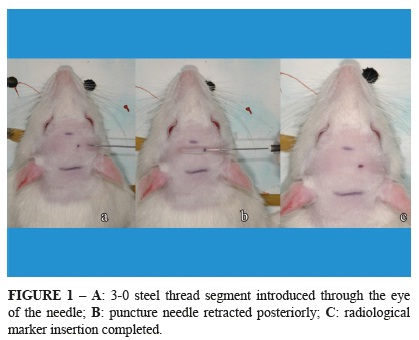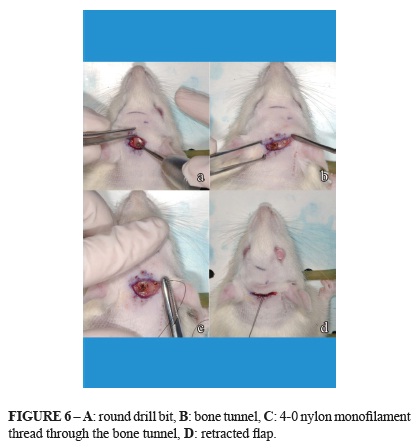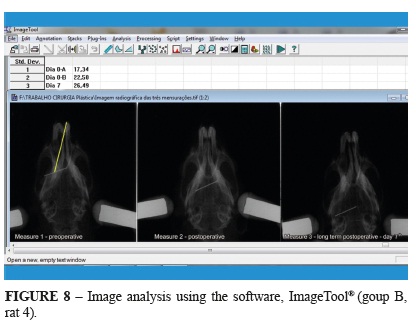PURPOSE: To develop an experimental model to study and radiologically monitor displacement of skin flaps in the pericranium of rats subjected to traction and surgical fixation using suture anchored in a skull bone tunnel or with N-butyl-2-cyanoacrylate (HistoacrylTM) surgical adhesive. METHODS: Radiological markers were placed in the subcutis of Wistar rats undergoing subperiosteal detachment of the pericranium with pulling and fixation of the flap. We performed radiography on postoperative days 3, 7, 14, 21, and 45. A p-value of <0.05 was considered significant. RESULTS: Qualitative analysis of the data indicated that the flaps in the surgical adhesive group remained in place with no change from the immediate postoperative position. However, the flaps in the suture anchored in the skull bone tunnel group and in the control group showed similar healing, with a loss of attachment of 9.7% and 22%, respectively, compared with the immediate postoperative position. There was no quantitative difference between the groups. CONCLUSIONS: This experimental model created acceptable experimental conditions for testing different soft tissue fixation methods. The use of tissue fixatives contributed to better placement of pericranium-cutaneous flaps, and surgical adhesive was superior to suture anchor in the skull bone tunnel for fixation of pericranium-cutaneous flaps.
Rhytidoplasty; Surgical Fixation Devices; Wound Healing; Adhesives; Rats










